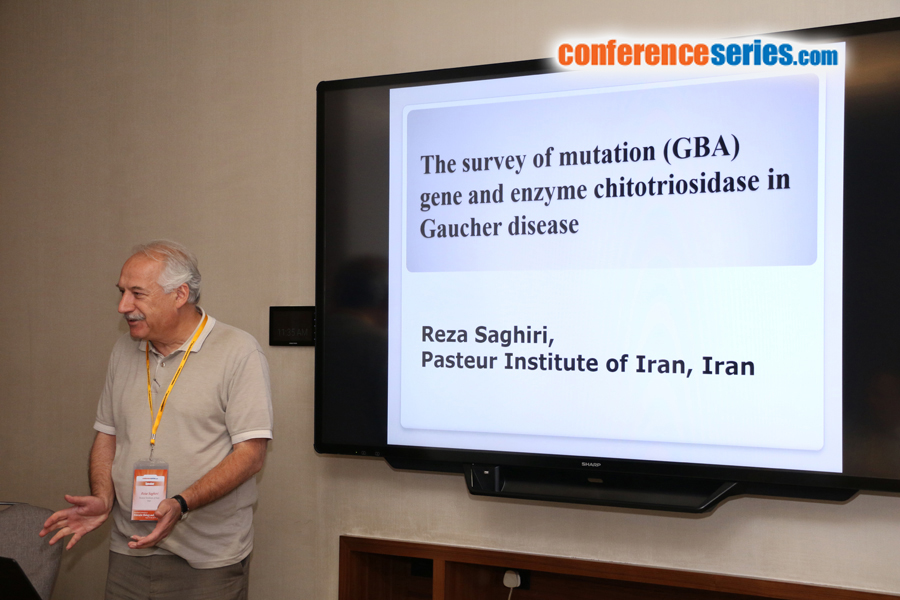
Reza Saghiri
Pasteur Institute of Iran, Iran
Title: The survey of mutation (GBA) gene and enzyme chitotriosidase in Gaucher disease
Biography
Biography: Reza Saghiri
Abstract
Introduction: Gaucher Disease (GD) is the most frequent autosomal recessive disorder of Lysosomal Storage Disease (LSDs). In this study, we set up the GD diagnosis standard fluorimetric assay.
Materials & Methods: We investigated the spectrum of mutations in GBA gene in 33 Gaucher patients from different Iranian populations by DNA sequencing, ARMS technique and PCR-RFLP, the GBA and CT enzyme activity in GD patients, 47 relative carriers and 105 age and sex matched healthy individuals was set up. Additionally, patients and controls were cultured in RPMI medium. The cell culture supernatant and plasma concentrations of IL3 and IL11 were determined by ELISA.
Results: For GBA activity, we determined the cut-off level of 1.61µmol/h/lit. The GBA activity test sensitivity and specificity were 96.9% and 100% respectively. Using cut-off level of 80.75% nmol/ml/h, sensitivity and specificity and CT activity were 93.9% and 100% respectively. Both GBA and CT activities of relative carriers were significantly different compared to GD patients and controls; however, their enzyme activities had an overlap (p<0.001). Compared to treated GD patients, untreated one had a significant higher CT activity (p=0.021). Chitotriosidase activity had a positive correlation with age in normal group (p=0.006; r=0.314. In GD patients, there was a direct correlation between TAC and hemoglobin concentration (p=0.035; r=0.369).
Conclusion: We designed and suggest rapid method (PCR-RFLP) for the first two incident mutations and designed an ARMS-PCR technique for primitive molecular screening of GD patients. These findings could be useful in screening programs and understanding of the molecular basis of GD.


